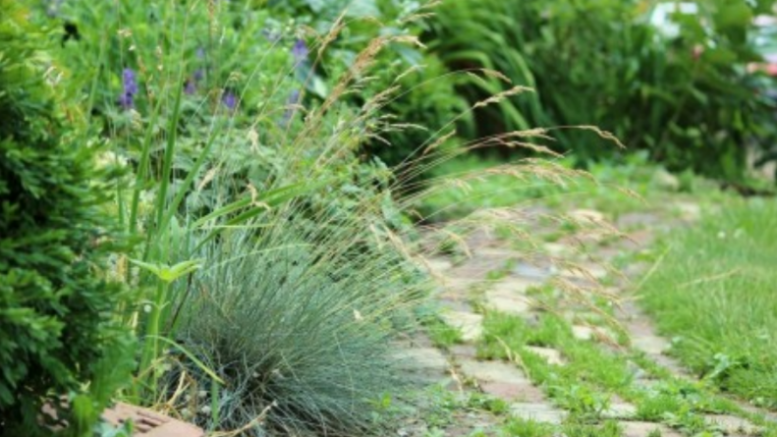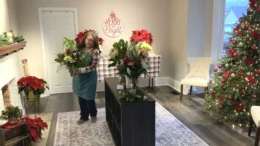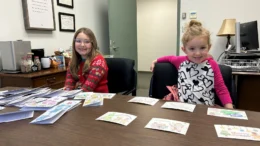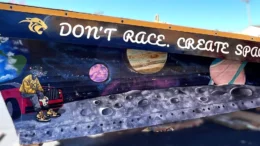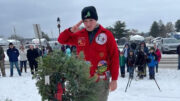Developing a landscape plan can seem like a daunting task. So many things to think about.
Whether it is new construction or renovating an existing landscape. It is best to approach it like the old joke. “How do you eat an elephant? One bite at a time.”
Get to know the site.
What kind of light does it get? Full sun, full shade, or most likely a mix. What is the current situation? If it is new construction, you may need to place topsoil. For existing sites, what is already there? Are there trees, shrubs, a lawn? What is the condition of them? Are there existing sidewalks, driveways, or patios/hardscape? What is the topography like? Do you have to deal with significant slopes? Are there any obvious wet areas?
Develop a list of wishes and wants
How will you use the site around your house? How much do you entertain, and for whom? Will you cook or eat outside? If so, how often? Do you wish to incorporate a play area, such as a lawn, for children? What outdoor hobbies or recreation activities do you enjoy? Do you want a flower or vegetable garden? Do you want a deck or patio? A swimming pool or hot tub? How much privacy do you want?
What is your budget?
Are you going to do the work yourself, hire a contractor, or both? What is the timeframe that you are looking at, complete the work all at once, or over several years?
Develop a sketch
Identify the house and existing features such as sidewalks, driveway, fences, utility lines. Identify any existing trees or shrubs that are likely to remain. Also, contact your local municipality, HOA, etc. to determine if there are any setback requirements. Start laying out some macro-level design areas, such as lawn, patio, flower bed, without getting into details of what will be planted.
Sustainable design
The phrase “sustainable design” is used a lot. People have different ideas of what it means, but generally people think of it as an “environmental term”, and to some extent it is. I define sustainable design as a design that has the maximum amount of success with the minimum amount of input, such as water, fertilizer, and most importantly to me, physical effort to maintain. Basically, the right plant in the right location. With enough effort, you can grow almost anything anywhere, but it is easier to select plants that are receptive to the conditions in which they are growing.
Native plants
One definition of a native plant is a plant growing in Pennsylvania before the European settlers arrived. Since they evolved here, they are well adapted to our climate and are generally easier to care for after planting. Many natives like less fertile soil and require little or no fertilization. When planting natives it is still important to match their needs to the growing site. Things to consider are soil type, soil pH, organic content, water retaining characteristics, and sun/shade conditions.
It is also important to consider the ultimate size of the plants to avoid overcrowding. It is generally best to combine plants that grow well in the same natural habitat.
Lawns
Lawns were developed in Europe by wealthy landowners that wanted to bring the meadows closer to the castle. They were generally tended by serfs, and or trimmed by grazing sheep. Most people nowadays don’t have serfs or grazing sheep, so maintenance normally is the responsibility of the homeowner. Lawns by far require the most input of resources in the normal landscape. They require frequent water, normally using municipal water, fertilizer, and chemical treatments, and significant manual labor to keep them trimmed. Many people aspire to a gorgeous, well-manicured lawn, but from a sustainability standpoint, lawns should be minimized.
This can be accomplished by having planting beds as a significant portion of your landscape. Sedges are a good alternative for people that are looking for the look of low, green foliage that is usually provided by a lawn.
General guidelines
When planning your landscaping keep the following guidelines in mind:
- Avoid invasive plants! Just because you can buy it at a store doesn’t mean it isn’t invasive. Some examples are Bradford or callery pear (Pyrus calleryana) and Japanese barberry (Berberis thunbergia), which are frequently used but are definitely invasive. Check with a reliable source such as Penn State Extension’s invasive plant fact sheets to determine if a plant is invasive.
- Have the soil tested prior to planting.
- Minimize lawns.
- Plant only plants, preferably natives, that are suitable to the conditions where they will be planted.
- Be aware of what wildlife may be sharing the landscaping with you and attempt to select plants that they might find less tasty.
- Always consider the anticipated final size of the plant in determining where to plant it. Don’t plant them too close together, or too close to a structure.
- Always group plants with similar growing needs and compatible size together.
Landscaping doesn’t have to be a scary proposition, but success will normally be directly affected by the amount of research and thought that goes into the planning.
This educational blog is a series of informative articles from the Penn State Master Gardeners volunteers plus news concerning the group and their activities. For more information, click here.

